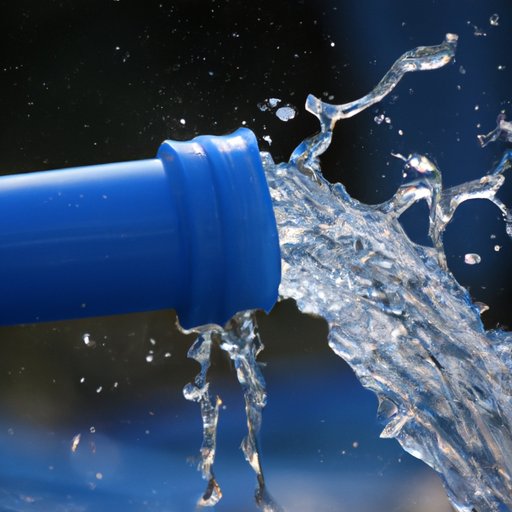
I. Introduction
As the scarcity of safe drinking water worldwide continues to be a growing concern, many people are looking for alternative sources of water. One such source is rainwater, which is plentiful and generally pure. In this article, we will explore the pros and cons of drinking rainwater, discuss different methods for collecting and filtering it, and shed light on the legal and environmental aspects of rainwater consumption.
II. Pros and Cons of Drinking Rainwater: Is It Safe?
Rainwater is free from the disinfection byproducts, such as chlorine and other chemicals, commonly found in municipal tap water. It also contains low levels of minerals, such as calcium and magnesium, making it ideal for consumption for some people. However, drinking rainwater also comes with some drawbacks, such as a lack of essential minerals required for good health and high risk of contamination caused by human, animal fecal matter, air pollution, and other contaminants.
The scientific evidence on the safety of drinking rainwater is limited and often inconsistent. While some studies show that rainwater is safe for consumption, others indicate that it can contain harmful bacteria and other contaminants. It is essential to understand the risks involved and take necessary precautions to make it safe for drinking.
III. The Importance of Collecting and Filtering Rainwater
Rainwater harvesting is a crucial method for conserving water resources, and it becomes even more important as the global freshwater supply is dwindling. There are different ways to collect rainwater, including rooftop catchment, ground-level collection, and surface runoff. To ensure the safety of rainwater for drinking purposes, it is essential to filter and disinfect it adequately before use.
There are many ways to filter rainwater, such as using a sediment filter, a carbon filter, or a reverse osmosis system. The type of filter used would depend on the quality of rainwater and the intended use, such as drinking, cooking, or irrigation.
IV. Rainwater Harvesting Techniques for Drinking Water in Rural Areas
Rainwater harvesting is especially significant in rural and remote areas where a centralized water supply system is not accessible. In such areas, rainwater can be a valuable source of potable water, and several methods can be used to store the collected rainwater, such as underground tanks and cisterns.
There are various techniques used to treat rainwater for drinking purposes in rural and remote areas, including disinfection with chemicals, such as chlorine and iodine, and other filtration methods like using activated carbon. These treatment methods can make collected rainwater safe for consumption if used correctly.
V. Drinking Rainwater in Emergency Situations
During natural disasters such as floods, hurricanes, and earthquakes, tap water may become contaminated, and drinking rainwater can be a lifeline. Understanding how to collect rainwater during an emergency situation can be critical to remaining hydrated. Boiling water would be the easiest and most effective way to make it drinkable.
VI. Tips for Using Rainwater as Drinking Water
There are some practical tips to consider to ensure the collected rainwater remains safe for drinking. When storing rainwater, use clean and non-toxic containers to prevent contamination. To disinfect collected rainwater, techniques like chlorination, ultraviolet light treatment, and boiling water, have proven to be effective.
Furthermore, collected rainwater can be used in a variety of household purposes such as cooking, laundry and showering.
VII. Is It Legal to Drink Rainwater in Your State?
In many states in the US, it is legal to collect and consume rainwater. However, some states still have certain regulations around rainwater harvesting and consumption, and it is vital to check with local authorities to understand their rules and permit requirements.
VIII. The Environmental Benefits of Drinking Rainwater
Drinking rainwater can significantly reduce water wastage and greenhouse gas emissions by reducing the demand for treated tap water. By providing an alternative source of water, rainwater harvesting can reduce the environmental impact of traditional water sources.
IX. Conclusion
Overall, drinking rainwater can be a great alternative to tap water, especially in areas where clean drinking water is scarce. It is essential to understand the risks and benefits associated with rainwater consumption, abide by the local laws and guides listed by the relevant authorities, and filter and disinfect the water always.
Finally, If you’re interested in utilizing rainwater for drinking purposes, consulting with a professional to evaluate the usage and to get recommendations for best practices would be great before starting the process.





